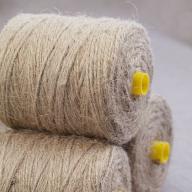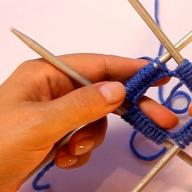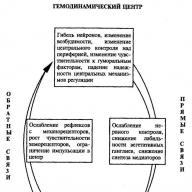Greetings, dear readers!
Do you use brushes in makeup? Or maybe you are more comfortable with your fingers or sponges? I prefer to use one thing for each decorative product, something that is more convenient for me. Today we’ll talk specifically about brushes, but not about all of them, but about one of my favorites.
The kabuki brush is an essential tool for makeup artists and modern women who are immersed in the world of makeup and decorative cosmetics. Therefore, in this article I will try to tell you as much as possible about it, what it is needed for, what it is, how to use it, choose it and care for it. Begin!
It’s not difficult to guess from the name that the kabuki brush Japanese origin. Yes, we are moving to Asia again. Honestly, I used to think that all cosmetics, new innovative developments in this area, well-known accessories came from the West, from Europe and the USA. But it turns out that no, Asia gave us a whole arsenal of means.
So, you’ve heard that there is a Kabuki theater in Japan. It employed actresses who had to put a lot of makeup on their faces. It was for them that Japanese craftsmen created dense brushes, which allowed the actresses to look in full dress.
But their cosmetics were not the most useful (rather harmful), and they applied powder, blush and even eye shadow with a kabuki brush. The makeup was bright, long-lasting and hid all the imperfections on the skin very well. Well, now this brush has spread all over the world and is produced by many brands.
How does she look? The kabuki brush has a thick, short handle and dense, trimmed bristles, which can be either natural or artificial.
A little about the pile
In order to decide which brush is best for you to buy, I will tell you a little about what they consist of.
- Natural pile.
This is animal fur, the best being pony and goat. Such bristles will be durable and soft, which will give you a pleasant feeling while using the brush. They are suitable for a more natural makeup look and are capable of blending makeup perfectly. If you are the owner of a tender sensitive skin face, then give preference to natural materials.
- Artificial pile.
These brushes are usually made of nylon. They do not cause allergies, unlike their natural counterpart. This brush creates a denser coverage on the skin and can even hide dark circles under the eyes. It is best to apply it to her.
How to use and what cosmetics are compatible with a kabuki brush?

So, important point, what exactly is this brush for? I will list here several types of decorative tools that work in tandem with kabuki.
- Powder.
- Blush.
- Foundation creams.
It's better for her to choose round kabuki brush. It is ideal for applying crumbly textures, especially. For a denser coverage, apply powder using circular motions. This application will perfectly hide all imperfections on the facial skin in the form of scars, acne, age spots and so on.
Kabuki can also be used at the final stage of makeup, just by putting a little translucent powder on the brush, do not press too hard on the skin, the touch should be the lightest. This will create a very thin, weightless coating.
But this is where it works best beveled kabuki brush. Here it is better not to get enough than to go too far. After all, a kabuki brush is very dense, and therefore can pick up a lot of product. If your blush is not very pigmented, you can try applying it with a tapping motion.
But it’s better to put a little blush on the brush, tap it a little on any surface to remove excess and apply it to your cheeks. And remember that the blush should have a dry consistency.
Yes, you can also apply foundation with a kabuki brush. But, as it seemed to me, lighter textures are applied much easier to her. But still I prefer to do this.
To apply Foundation on the face, you should first squeeze a little product onto the back of your hand. And then take the kabuki and pour the cream into it, while performing driving actions, this is necessary in order to foundation evenly distributed over the bristles of the brush.
For denser and more lasting makeup, you will have to make trampling movements into the skin with a kabuki brush, this is how the product will lie perfectly, hiding all the unevenness, and at the same time creating an even tone on the face. You can first make circular movements, and then switch to driving ones. Try different things.
If you like to contour your face with these two products and use dry textures, then a kabuki brush is great for this. Makeup looks more natural and harmonious, since this brush does a very good job of shading the edges.
Mostly for daily makeup I use a kabuki brush to apply powder. Here everyone must decide how and with what is the best way to create makeup, try new things, look for the best options.
How to choose a quality accessory?
If you decide to buy yourself a Kabuki brush, then when choosing, you should take into account a number of recommendations that makeup artists give. You can purchase an accessory in an online store, relying on reviews from those who purchased it or the brand’s popularity.
But if you tend to go and choose cosmetics and accessories for them in regular stores, then consider the following:

If these components are present, the brush will be stored much longer. longer, because it will be kept clean and separate from other makeup accessories.
Guide to Cleaning a Kabuki Brush
How well you take care of your kabuki brush will determine not only its durability, but also the condition of your skin. After all, often using this accessory, particles of our skin and cosmetics accumulate on it, and all together this creates a real breeding ground for bacteria. This applies not only to liquid textures, which, of course, primarily, but also to dry ones.
How to wash your brushes?
- With means specially designed for this purpose. You can purchase it together with a brush; usually online stores always offer this. This option is mainly used by professional makeup artists.
- Shampoo. Suitable for home cleaning of brushes from dry products.
- Dishwashing liquid. It “washes off” foundation well.
It is not recommended to wash a kabuki brush under running water; it is better to give it a “bath procedure.” To do this, in a small container, a glass will do, you need to pour a little warm water, add shampoo or dishwashing detergent, and stir everything well. Dip the bristles of a kabuki brush there and swirl it in the soapy liquid to clean it of “plaque and stubborn dirt.”
After this, drain the dirty waste water, fill it with clean water and rinse the kabuki. Do this several times. For greater softness and a pleasant aroma of the hair, you can also add a little hair balm to clean water.

Now let's talk about proper drying.
After you have washed the brush, it must be dried in natural conditions; under no circumstances use a hair dryer if you do not want to end up with a useless brush. It’s better to just blot the brush with a towel and then hang it with the nap down, but it’s not recommended to leave it in the bathroom, it’s too humid there.
If you place it with the bristles facing up, moisture from the bristles will migrate into the handle, which can ruin it. Clean the accessory at least once a week.
After almost every use, I lightly wipe my brush with a damp antibacterial wipe; I just don’t like it when my makeup accessories look untidy. But, of course, I don’t forget about deep cleaning, as I wrote above.
OK it's all over Now. Today I told you about my favorite face makeup brush. I hope that you will like it too, because now you know what to use it for and how to handle it. The kabuki brush is a time-tested accessory. IN next time we will look at other brushes, because there are so many of them, and each is designed for its own type of decorative cosmetics.
Happy makeup! See you!
How to choose the right makeup brushes? There are so many beauty tools that it’s dizzying: each brush has its own shape, name, and purpose. This article is dedicated to Kabuki - popular brushes that allow you to create the perfect make-up.
History of the kabuki brush
The brush got its name in honor of the Japanese theater "Kabuki", which existed several centuries ago. To achieve bright stage makeup, the actors used brushes with short handles and very thick bristles. The scope of application of such brushes was extensive: they applied powder, blush and even eye shadow.
The first kabuki brushes were made by hand. Since only natural materials were used to create them, the price was high and ordinary women (unlike us), unfortunately, could not afford such a purchase.
Kabuki brush in makeup
Modern brushes, while retaining the features of their ancestors, are also characterized by a short handle and abundant, lush bristles. Kabuki is an ideal brush for powder (mineral loose) or blush. Kabuki brushes are not recommended for applying liquid or creamy textures, since it is extremely difficult to achieve an even distribution of tone with thick bristles.
The dense bristles make the Kabuki a great powder brush. Mineral cosmetics with a very finely ground texture are perfectly applied to the brush, resulting in a flawlessly even coverage of the face.

To purchase the right makeup brushes, you should consider the following parameters:
- Appearance of the pile. A quality brush will never have individual hairs sticking out from the overall mass. The pile should be neatly trimmed and soft. No discomfort when pressing the brush on the skin!
- Pile density. The right makeup brushes have bristles that fit tightly together. Before purchasing, it is recommended to wrinkle the brush to make sure that the bristles immediately return to their original position (a sign of quality). If this does not happen, it is better to choose a different brush.
- Short handle. Although there are kabuki brushes on the market with different handle shapes, the right makeup brush has a short handle.
- Availability of a cover or protective cap. It is advisable that the kabuki have a “case” that allows it to be stored separately from other make up tools.
Powder brushes differ in the shape and material of the bristles. There are kabukis with both natural bristles (mostly goat) and artificial bristles, made of nylon. Each material has its own advantages and disadvantages. It is easier to care for brushes with artificial bristles. In addition, they are cheaper and hypoallergenic. But kabuki with natural bristles lasts longer and is also more pleasant on the skin (due to this, such bristles are recommended for those with sensitive skin).
The shape of the bristles in kabuki brushes can be rounded, flat or beveled. What to choose is a matter of taste, but most makeup artists prefer a rounded powder brush.
Which brand of kabuki brush should I choose?
Despite the fact that these accessories are produced by different brands, the most popular products are from the following brands.
The Mary Kay Kabuki brush is characterized by a not very budget price and excellent quality. Dense pile of natural bristles, which has a rounded shape, provides a flawlessly even coverage of the skin. Thanks to its soft bristles, which are very pleasant to the touch, the Mary Kay Kabuki brush can be found in the arsenal of many makeup artists.
The Rive Gauche kabuki brush has a more affordable price. This great choice for those who would like to try the accessory in action and do not know whether they will continue to use it. The brand produces brushes with natural and synthetic bristles, in various color ranges, with classic round or beveled bristles. It is believed that beveled pile best helps to disguise skin imperfections. The Rive Gauche Kabuki brush has a handle made of plastic that does not deteriorate in high humidity conditions.
The Yves Rocher kabuki brush is equipped with a soft round brush made of natural material. Thanks to rounded shape stubble when applying powder, you get a uniform complexion tone without any transitions. Pile High Quality, does not interfere during use. Some owners of Kabuki Yves Rocher complain that after washing the bristles became prickly. Washing your brush with a mild shampoo will prevent this from happening.

Makeup brush care
In order for your powder brush to serve you for as long as possible, you need to take proper care of it. Remember the following tips on how to wash your makeup brushes.
Regardless of whether the bristles are natural or synthetic, they need to be washed regularly. Professionals typically use special remedy, intended for washing brushes. At home, regular shampoo is more often used.
It is recommended to wash kabuki not under the tap, but in a glass of warm water. After diluting a small amount of shampoo there, lower the brush into the glass with the bristles down and shake well. Then the brush should be rinsed in a glass in the same way several times, but in water without shampoo. To keep the bristles soft, you can use hair conditioner after shampoo.
In addition, proper makeup brushes (as kabuki brushes are often called) need to be dried properly. In order for the accessory to serve you as long as possible, you need to dry it only in a vertical position - with the pile down. You cannot use a hairdryer, otherwise the bristles will deteriorate and you will have to throw away the brush! The pile should dry naturally. After washing, dry the bristles with a soft towel and then hang the brush. We hope that we have fully answered the question “How to wash makeup brushes.”
Don't forget to groom your kabuki regularly! After all, even a branded, expensive tool will not last long if it is never washed. In addition, dirty stubble is a sweet spot for the growth of bacteria that cause skin irritation. Flawless make-up and even skin tone!
The choice of brushes, as well as cosmetics, determined by individual request: a spatula for dense foundation will not be useful for those who use only powder, and the softest brush may be useless against dense blush. But according to general recommendations, you will be able to assemble a good basic set of brushes, which can then be supplemented with experience. And yes, it is important to remember that brushes can be used for other purposes (concealer brushes for lipstick, and vice versa), and this is the main beauty.
Duofiber
Strictly speaking, duofibres are a class of brushes for different types products: eye shadow, blush, foundation, highlighter and more. Brushes with both natural and synthetic bristles can be different forms and sizes, but they are all very delicate, so the best tool for thin application and thorough shading cannot be found. Perhaps you should start getting acquainted with them with the famous MAC 187 - with it, even a blood-red pigment like Nars Exhibit A can be presented as a natural blush.
Angled brush

Arrows are most often drawn with a beveled brush - this form is truly ingenious and allows even beginners to draw fairly straight lines. Of course, you can just line your eyes with it, and it’s also perfect for drawing out eyebrows. You can find a similar brush in the corresponding department of almost any brand: be it in the well-established L’Etoile, or in Bobbi Brown.
Kabuki

Funny short kabuki brushes are designed to work with tightly compressed products. The thick, ball-shaped pile, like this Givenchy's, applies bronzers, powders, blush well, and it also manages to, as they say, polish the skin - so it is especially convenient to rub in complex textures like cream powder with such a brush.
For a dense tone

The most common brush shape for such products is a spatula, or “tongue”; Every brand, even small ones, has these. But the “star” brush Shiseido 131 for dense foundation has an unexpected shape: dense, artificial fiber, with an absolutely flat cut, as if the top of a kabuki was cut off. It perfectly beats in the most viscous textures, and it is physically impossible for it to leave unblended streaks of cream - and this is what spatulas often do.
For blending shadows

The right brush for blending eyeshadow can inspire experimentation among those who have never thought about trying eye makeup before. Complex transitions of shades and that same haze in smoky eyes cannot be done with a bad - or inappropriate - brush. What is important at the same time is softness, elasticity, some fluffiness, not a trimmed but gathered edge and a small size. The best option many call the classic MAC 217, but the Evgeny Cosmetics Crease Brush, created by makeup artist Evgeny Lukyanenko, is praised even more by experienced people.
For blush

In general, a blush brush, as we will explain below, can be replaced with a neat powder one. But if you find one, it’s still worth purchasing a specialized one. If you choose a fluffy beveled one, it will be convenient for contouring and, and a more sophisticated concept with a “broken” handle, like Japonesque, will not only simplify life, but also open up new horizons - the tools are no less inspiring than the shades.
For a manicure

No one can ever paint their nails perfectly with a bottle brush, but not everyone is unhappy with it. Those who are especially critical of the quality of application should acquire a nimble, flexible and flat brush made of artificial fiber to correct the border at the cuticle and remove polish from the skin around the nail. If you also plan, a brush for fine lines It would also be useful - they are usually labeled “for eyeliner”.
For powder

Such a brush should be large and soft so as not to pick up too much product and quickly spread it over the face. Of course, you can apply it not only with powder: it is also quite suitable for bronzer and highlighter, and if you choose a medium-sized brush, you can also apply blush with it - some quite convenient blush brushes are simply smaller copies of powder ones.
For lipstick

New lipstick is easy to apply straight from the tube, but when it wears off, it takes a lot of time to apply it accurately. To avoid the latter and approach lipsticks and glosses with complex textures, you should get a special brush. You can choose any artificial bristles of a suitable shape: it’s convenient to paint small lips with a small brush. A separate bonus of lipstick brushes is their compactness: most often they are foldable and come with a cap that allows you to carry them with you everywhere.
Eyebrow comb

We already know how important shaped eyebrows are. If the set with eyebrow gel or wax did not include a suitable brush, you should buy a separate one (however, if you don’t use either gel or wax, it’s also worth buying). Of the entire list, it is perhaps the least versatile and is only suitable for combing eyebrows and eyelashes. On the other hand, you cannot replace it with any other brush.
Kabuki brushes are designed for applying mineral foundation to the entire face. Most often they have a short base and a domed shape, but sometimes there are kabuki with long handles, kabuki with a flat or beveled cut. A kabuki brush is always quite densely packed; its purpose is to take and release exactly as much product as required.
How to apply the product correctly with such a brush? After pouring the required amount of foundation, dip your kabuki brush into it and make a few twisting movements. Shake off excess by tapping the brush on the jar or container containing the foundation. You can tap the base (handle) of the brush on the surface, holding it vertically with the bristles up. This will help distribute the product inside more evenly.
Now the mineral base can be applied with soft in a circular motion. Imagine that you are polishing your skin by rubbing the product into it. Go over all areas of the face, not forgetting the border with the hair and neck. If necessary, you can apply another layer by repeating the procedure from the beginning.
Kabuki is a fluffy brush on a small “leg”. Using a Kabuki brush, the products are applied to the skin in a fairly dense layer. All thanks to that very “leg” - it allows you to grip the brush as close to the bristles as possible and increase the pressure during application. The brush inherited its name from the traditional Japanese kabuki theater - for the reason that the actors in it appear in front of the viewer with very complex, thick, “heavy” makeup. They used a similar brush to cover the face with a thick layer of white rice powder.
Which form is better?
Today, Kabuki is one of the basic brushes suitable for creating everyday makeup. Round and flat kabuki “work” differently. The first allows you to get a dense, but at the same time quite natural result. The second is suitable for applying the thickest textures and creating the most “reliable” coatings that can hide any imperfections.
Which material is better?
Synthetic kabuki is good for creating coverage over noticeable imperfections such as dark circles under the eyes. And kabuki with natural bristles will help you get a softer result due to the fact that they cope better with shading.
What to apply with a kabuki brush?
- Foundations (fluid, cream, powder)
Kabuki is primarily used to even out skin tone. Circular "sanding" movements will provide a smooth, even and natural finish. A more dense and lasting result can be obtained in another way - as if by “driving” the product into the skin.
- Blush
A couple of strokes made with a kabuki brush are enough to decorate your cheeks with a fresh blush. But remember that it is better to pick up very little product with the brush, otherwise the coating will turn out too bright.
- Contouring products (bronzer and highlighter)
Kabuki is ideal for sculpting the face - the result will look natural, since this brush is good for blending the border between bronzer and highlighter. You need to apply the products again with light strokes.
- Fixing powder
Use Kabuki without pressing to finish your look with a translucent setting powder. Then it will “lie” on the skin not as another heavy layer, but as a light veil.
By the way, you can experiment with a kabuki brush and find non-standard options for its use. Beauty bloggers came up with the following: spray kabuki with hairspray and smooth out hair and strands that stray from the hairstyle.




